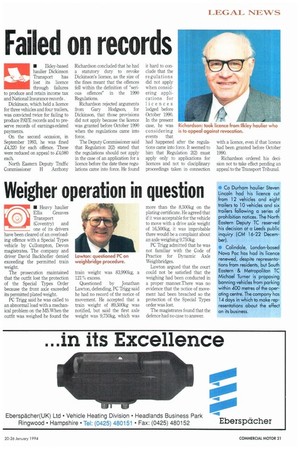Weigher operation in question
Page 23

If you've noticed an error in this article please click here to report it so we can fix it.
• Heavy haulier Ellis Greaves Transport (Coventry) and one of its drivers have been cleared of an overloading offence with a Special Types vehicle by Cullompton, Devon magistrates. The company and driver David Backholler denied exceeding the permitted train weight.
The prosecution maintained that the outfit lost the protection of the Special Types Order because the front axle exceeded its permitted plated weight.
PC Trigg said he was called to an abnormal load with a mechanical problem on the 11,15.When the outfit was weighed he found the
train weight was 83,990kg, a 121% excess.
Questioned by Jonathan Lawton, defending, PC Trigg said he had no record of the notice of movement. He accepted that a train weight of 89,500kg was notified, but said the first axle weight was 9,750kg, which was more than the 8,500kg on the plating certificate. He agreed that if it was acceptable for the vehicle to move with a drive axle weight of 16,500kg, it was improbable there would be a complaint about an axle weighing 9,750kg.
PC Trigg admitted that he was not familiar with the Code of Practice for Dynamic Axle Weighbridges.
Lawton argued that the court could not be satisfied that the weighing had been conducted in a proper inannerThere was no evidence that the notice of movement had been breached so the protection of the Special Types order was lost.
The magistrates found that the defence had no case to answer.




















































































